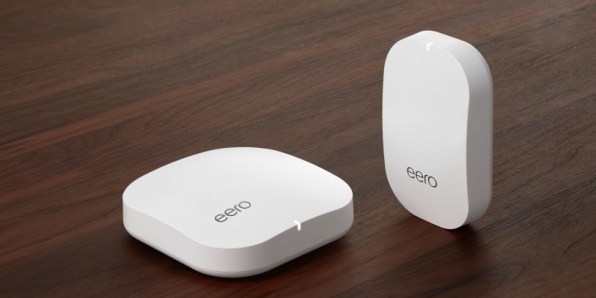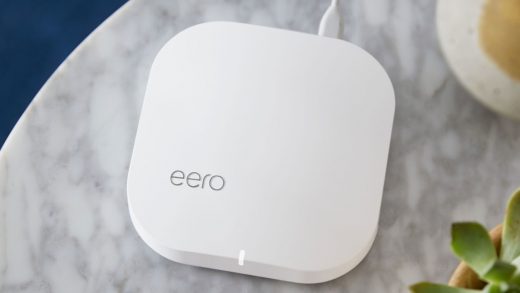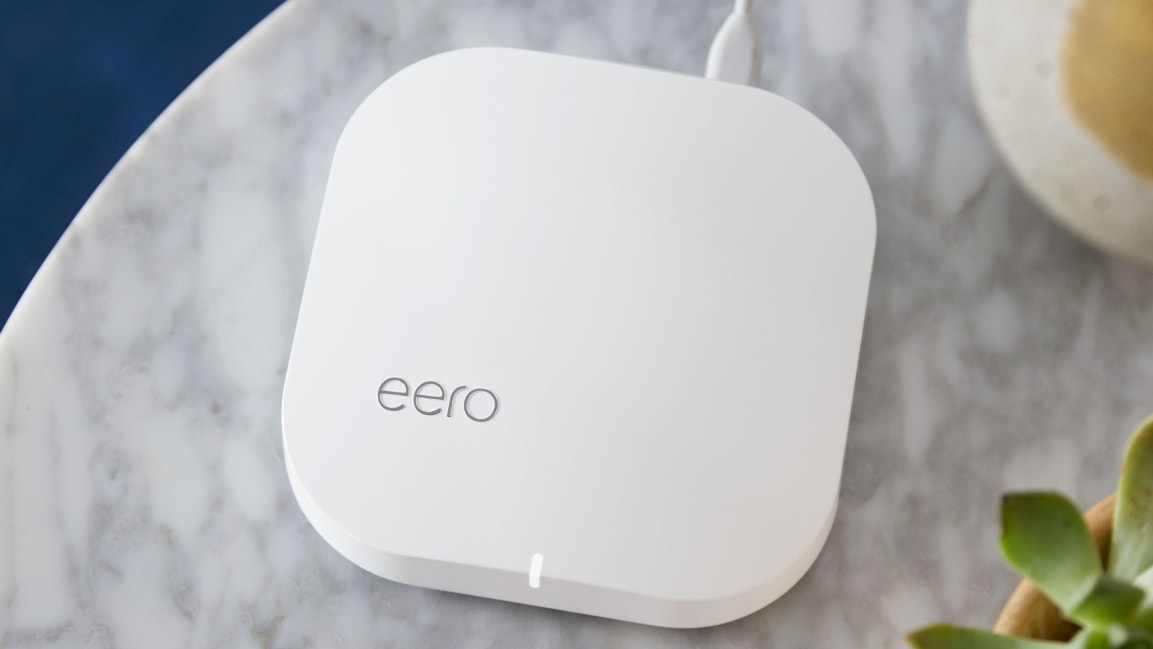Amazon buying Eero is sobering proof of big tech’s utter dominance
Perhaps it’s a sign of the times that Amazon’s acquisition of pioneering mesh router maker Eero has been met in tech circles with skepticism instead of enthusiasm.
In the short term, the purchase gives consumers plenty to look forward to. Eero’s mesh router systems, which saturate a home with Wi-Fi coverage through multiple access points, currently start at $300 for a two-pack. They’ll almost certainly become cheaper now, just like Ring’s doorbell cameras did after Amazon bought that startup last year. And if you were worried about the long-term viability of a router that constantly turns to the cloud for network optimizations, the backing of a cloud computing giant should put those fears to rest.
At the same time, the news should be a letdown to anyone who’s rooting for more scrappy competition in consumer tech, and less dominance by tech giants. Eero once dreamed of being more than just a router maker, and saw its hardware as the gateway to a future operating system for the home. In getting devoured by Amazon, Eero has effectively given up pursuing that vision on its own, and is instead becoming a pawn in Amazon’s turf war against Google and Apple.

Eero’s ambitions
I’ve interviewed Eero CEO Nick Weaver on several occasions, and each time he emphasized that mesh routers were just one building block in a broader platform. Eero’s access points, he said, had a lot more computing power than what was necessary for Wi-Fi, in theory paving the way for a distributed home computing platform. This could be useful for all kinds of things, from instantaneous control over smart home devices to an Alexa-like local voice assistant that didn’t have to send every command to the cloud.
“With connectivity in place, think about what the other building blocks of our system are in general,” he told me two years ago. “Each of the units has [computing capability], each of them has storage, it’s tied to a really robust cloud and data infrastructure, so you’re able to take advantage of that to do even more. From there you can see the very, very early beginnings of what a whole home platform needs to look like.”
Eero never quite managed to flesh out that vision. Its second-generation routers support a wireless smart home protocol known as Thread, but nearly two years after launch, barely any Thread-compatible devices exist, and support on Eero routers remains buried under advanced settings. Eero also launched a $99 per year subscription service called Eero Plus, which provides network-wide malware filtering, ad blocking, and content screening. This was a fine initial gesture toward router-based applications, but it still hasn’t really expanded beyond the mundane scope of managing network traffic.
Amazon’s ascent
At the same time, Amazon and Google have gone from merely dabbling in smart homes to staging full-scale home takeovers. When Eero started talking up its bigger plans in late 2016, Google had only just gotten into smart speakers, and Amazon’s Echo speaker only worked with a few dozen smart home products. Google Assistant and Alexa integration has since become table stakes for thousands of devices, and both Google and Amazon have been building their own smart home hardware through their Nest and Ring brands.
Their inevitable dominance has likely caused other smart home platform efforts to fall by the wayside. Wink has been floundering ever since getting acquired by will.i.am in 2017 (with its own website not even stocking the Wink Hub central controller), Lowe’s is throwing in the towel on its Iris platform, and even Samsung’s SmartThings seems to be forever waiting for a better version of the Bixby voice assistant to carry it forward.
In hindsight, Eero’s grander ideas were never going to flourish without the backing of a tech giant. If you’re a smart home device maker, you can certainly sell some door locks or light bulbs or a security system. You might even be able to monetize those products with some kind of subscription service. But good luck building a larger platform around those products now. Eero was staring into a future of commoditized router hardware alongside the likes of networking kingpins such as Netgear and Linksys, all of which offer mesh systems comparable to Eero. The only way to do bigger things was to get absorbed by a much larger company.
We can guess how Eero’s story goes from here. Deeper integration with Alexa becomes a priority, while other ecosystems become an afterthought. (If you believe the idea that Eero might make router pods with voice control built in, the odds of them supporting multiple assistants, à la Sonos, is now effectively nil.) And while Eero says its policy against tracking people’s online activity won’t change, it’s still reasonable to wonder whether Amazon will use the acquisition to gain ever-deeper insights into what people are doing at home.
A couple years ago, it was plausible to think that Eero could build a formidable smart home platform in its own right. Now, the idea of anyone besides Amazon, Google, and Apple doing so just seems naive.
(22)



